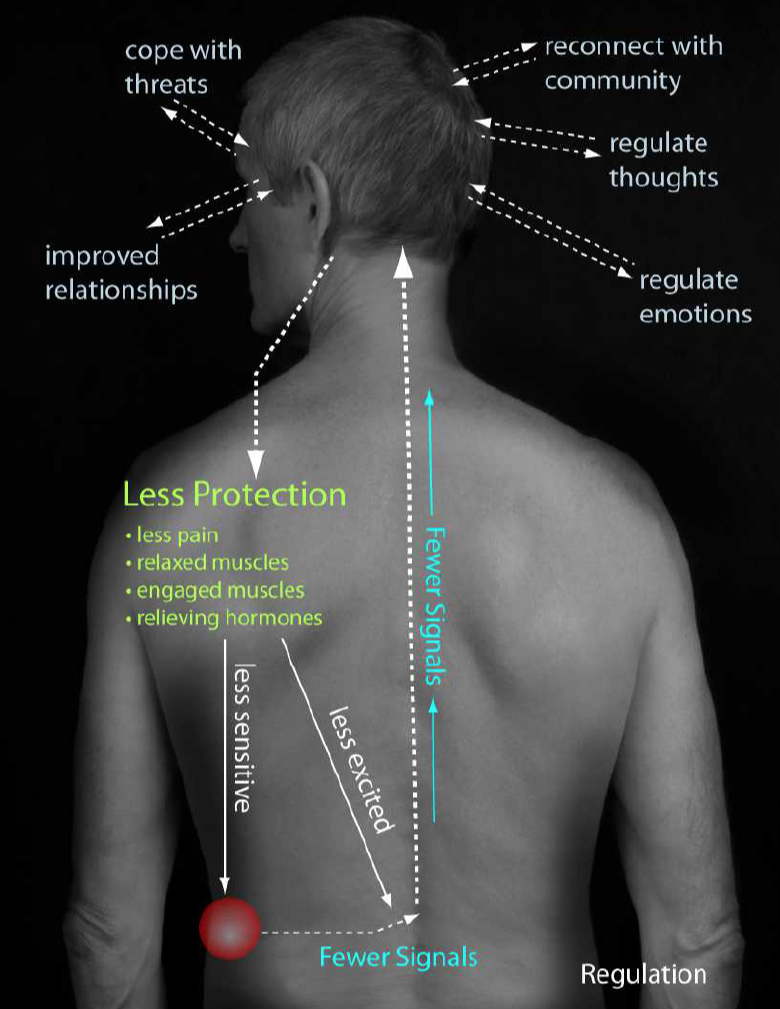Chronic pain by its definition is pain that persists after the original injury is healed and standard medical treatments have not alleviated the pain. At this point, most medical professionals do not know what else to offer.
What we know works from inpatient chronic pain treatment
Research clearly shows that multi- or interdisciplinary treatment teams working at major pain centers and offering inpatient, or a very structured outpatient program are quite successful. They offer intensive daily engagement with other people who have chronic pain, group stress management, therapy to deal with emotions and habits, and physical therapy and exercise programs. All these are combined with expert medical care and usually a program to get off opioid medication.
Read an overview of chronic pain management programs at the American Chronic Pain Association Website.
Recommendations by the Army
The Pain Management Task Force Final Report May 2010 by the US Army recommends a “comprehensive pain management strategy that is holistic, multidisciplinary, and multimodal in its approach, utilizes state of the art/science modalities and technologies, and provides optimal quality of life for Soldiers and other patients with acute and chronic pain”. The report can be downloaded as pdf.
Supporting Pain Self-management
The image above is from a professional slideshow: Supporting Pain Self-management from the Pain BC website 2013 conference.
What you can do
Most people with chronic pain will never have access to a comprehensive chronic pain program, or even a pain support group. I offer this website to help you put together your own pain management program. Whether you attend an official pain program, or set out on your own: in the end, it will be you who is your own best advocate. Only you can listen and sense into your body and your emotions, and take action. You need to find the right professionals and approaches in your community, evaluate what works for you, and then keep fine-tuning it. This approach can be tough, time and resource consuming. I hope that I can add encouragement and some not-so-generic information to the process. I will link you to free resources as much as I can.
The topics and resource you find on this site may sound alternative– for example meditation or mindfulness– but almost all are actually part of conventional chronic pain inpatient medical treatment programs.
I hope you will be curious to try out something new that might just allow you to live better with your pain, to live a full and active life.
Not everything here will be new to you, so perhaps I can remind you of something that has worked for your before. Or perhaps I offer a slightly different approach. I want to encourage you to start, to re-start, and to continue your own pain management program.
And please let me know what is working for you. You can e-mail me at kerimafurniss@gmail.com

